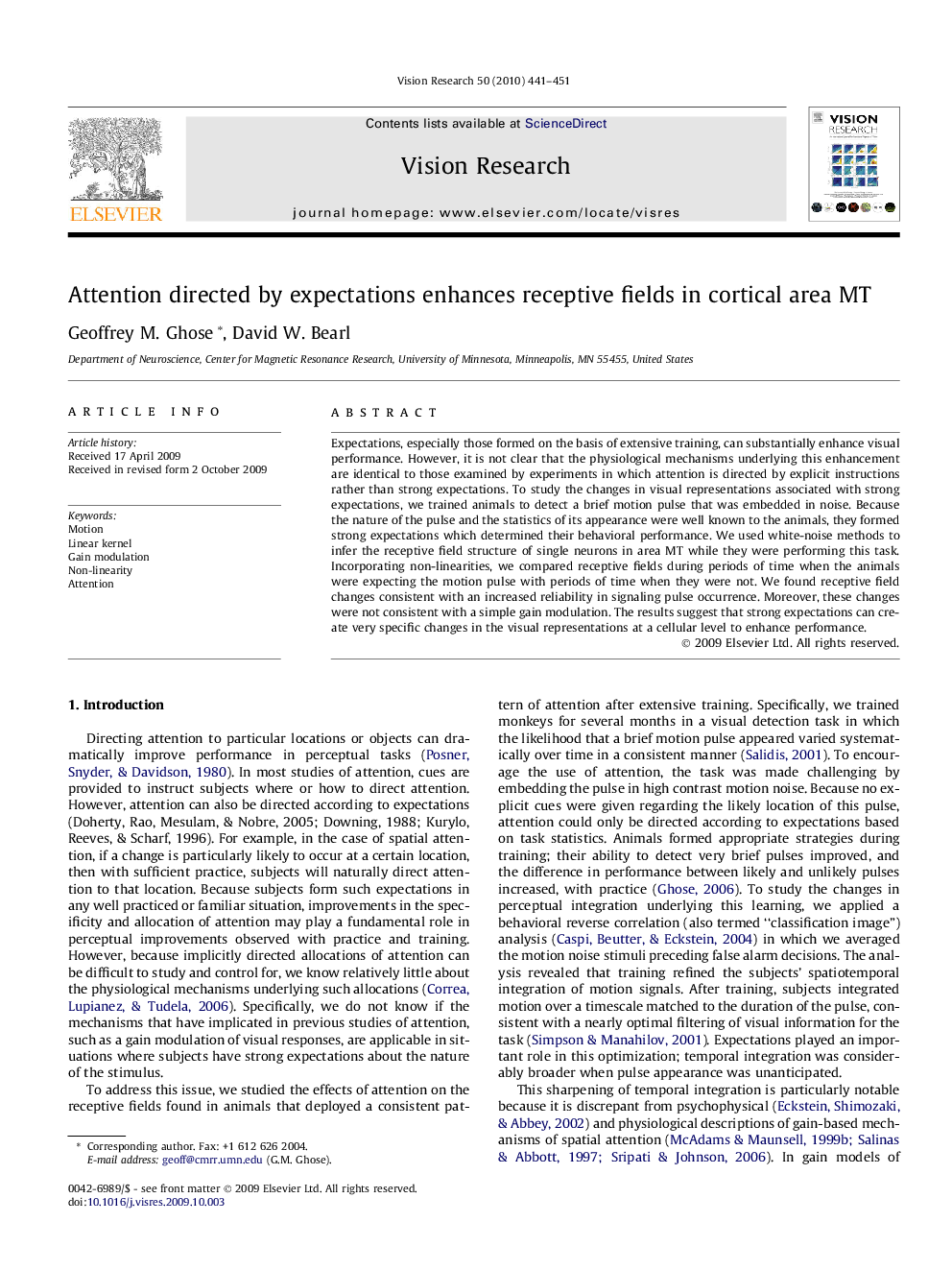| Article ID | Journal | Published Year | Pages | File Type |
|---|---|---|---|---|
| 4034542 | Vision Research | 2010 | 11 Pages |
Expectations, especially those formed on the basis of extensive training, can substantially enhance visual performance. However, it is not clear that the physiological mechanisms underlying this enhancement are identical to those examined by experiments in which attention is directed by explicit instructions rather than strong expectations. To study the changes in visual representations associated with strong expectations, we trained animals to detect a brief motion pulse that was embedded in noise. Because the nature of the pulse and the statistics of its appearance were well known to the animals, they formed strong expectations which determined their behavioral performance. We used white-noise methods to infer the receptive field structure of single neurons in area MT while they were performing this task. Incorporating non-linearities, we compared receptive fields during periods of time when the animals were expecting the motion pulse with periods of time when they were not. We found receptive field changes consistent with an increased reliability in signaling pulse occurrence. Moreover, these changes were not consistent with a simple gain modulation. The results suggest that strong expectations can create very specific changes in the visual representations at a cellular level to enhance performance.
